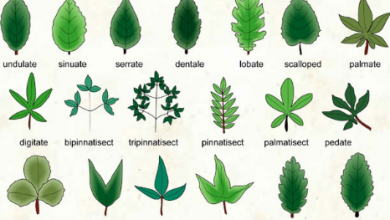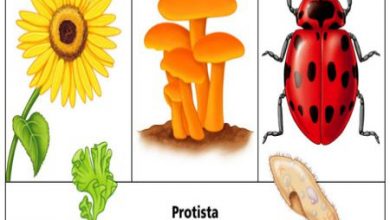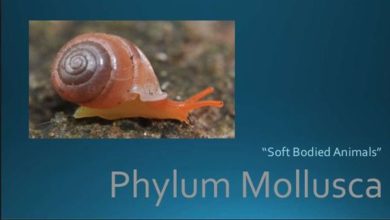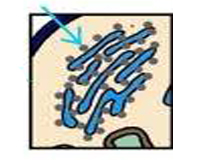Difference between Prokaryotic and Eukaryotic Replication
the basic Difference between Prokaryotic and Eukaryotic Replication is that Prokaryotic Replication occurs inside the cytoplasm and 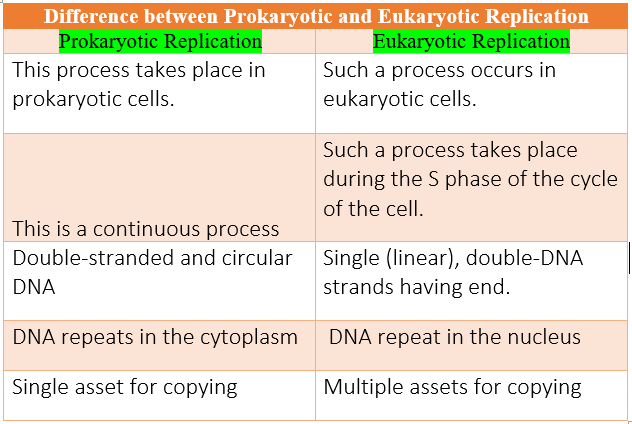 have single origin of replication and DNA gyrase is needed while Eukaryotic Replication occurs inside the nucleus and have numerous origin of replications. the DNA gyrase is not needed in this replication.
have single origin of replication and DNA gyrase is needed while Eukaryotic Replication occurs inside the nucleus and have numerous origin of replications. the DNA gyrase is not needed in this replication.
DNA replication is the process of obtaining two identical copies of DNA from the original DNA strand. Repeat DNA before cell division occurs. Original and eukaryotic DNA reproduce in a semi-conservative manner. However, based on their size and complexity in genetic material, there are some differences between the Prokaryotic and Eukaryotic Replication
You May Also Like: Difference between Prokaryotic and Eukaryotic Cells
DNA transcription-deoxyribonucleic acid occurs before cell division to ensure that both cells receive a repeat of the parental genetic material. Although prokaryotic and eukaryotic cells have many similarities in how they replicate DNA, there are many differences between them because of the size and complexity of the molecules (including the time required to complete the process).
Steps during DNA replication:
DNA replication begins at a specific point on the DNA molecule called the start of transcription. Initially, the enzyme loosened the double helix, making its components available for replication. Then, each thread of the IUD is separated from the other, and the unpaired base is now exposed as a mold for the new thread.
A small portion of RNA-ribonucleic acid is added as a primer, and then new nucleotide bases that supplement unpaired bases can be combined together to form two child threads next to each parent thread. This polymerization is achieved by an enzyme called polymerase DNA. When the process is complete, two identical DNA molecules will form each other, and the original will form one. Prokaryotic and Eukaryotic Replication has some major differences as discussed below.
You May Also Like: Difference Between Addition and Condensation Polymerization
Prokaryotic DNA
This is the process by which the genome of a prokaryotic cell is doubled so that it can be transformed into progeny cells. DNA is circular, double-stranded, and exists in the cytoplasm. A single source of replication will result in the creation of two replication branches.
Prokaryotic DNA is extended by DNA polymerase III. Nucleotides will be added in 3-5 directions. The jokes formed by the ligase are combined.
Eukaryote DNA
Eukaryotic DNA is located in the nucleus of the cell. The process includes three steps-start, extend and finish. DNA helix and single-strand binding protein are responsible for jaw fixation. When the main tape of a repetitive bubble meets another delayed tape of a repetitive bubble, the copying process will stop.
Difference between Prokaryotic and Eukaryotic Cells
The synthesis of prokaryotic cells is very simple. They have no nucleus, no organelles, and only a small amount of DNA exists in the form of a single-ring chromosome. On the other hand, eukaryotic cells contain multiple nuclei and organelles, and more DNA is arranged into multiple linear chromosomes.
Similarities between Prokaryotic and Eukaryotic Replication
For prokaryotic and eukaryotic replications, the DNA replication steps are usually the same. This DNA is decoded by an enzyme called helicase DNA. The new DNA strand is synthesized by an enzyme called polymerase.
Both types of organisms follow a pattern called semi-conservative repetition. In this mode, the individual DNA strands are synthesized in different directions, leading to the generation of leading and lagging strands. The backward strand is produced by generating small DNA fragments called Okazaki fragments, which are eventually attached. Both types of organisms use small amounts of RNA to trigger new strands of DNA. (Difference between Prokaryotic and Eukaryotic Replication)
The similarity between the original and eukaryotic copies can be understood as:
- Both types of replication occur before the nuclear partition.
- The common DNA in these two processes is double-stranded.
- Transcription will take place in 5-3 directions.
- Single-chain protein stabilizes harmless DNA.
- RNA primers are prepared by enzyme priming enzymes.
- Two copies of two-way DNA.
The differences between Prokaryotic and Eukaryotic Replications
The difference between original and eukaryotic DNA replication is largely related to the size and complexity of the DNA and cells of these organisms. Eukaryotic cells contain 25 times more DNA than prokaryotic cells.
In prokaryotic cells, there is only one starting point, repetition occurs simultaneously in the opposite direction, and occurs in the cytoplasm. On the other hand, eukaryotic cells have multiple starting points and use unidirectional replication within the nucleus. Prokaryotic cells have one or two types of polymers, while eukaryotes have four or more types. (Difference between Prokaryotic and Eukaryotic Replication)
Compared with prokaryotes, recurrence in prokaryotic cells is much faster. Some bacteria only take 40 minutes, while animal cells like humans may take 400 hours. In addition, eukaryotes also have a unique process of repeating telomeres at the ends of their chromosomes. With round chromosomes, prokaryotes have no synthetic ends. Finally, short replication of prokaryotes occurs almost continuously, but eukaryotic cells only replicate DNA during the S phase of the cell cycle. (Difference between Prokaryotic and Eukaryotic Replication)
Prokaryotic vs Eukaryotic Replication in Tabular Form
Prokaryotic Replication | Eukaryotic Replication |
| This process takes place in prokaryotic cells. | Such a process occurs in eukaryotic cells. |
| This is a continuous process | Such a process takes place during the S phase of the cycle of the cell. |
| Double-stranded and circular DNA | Single (linear), double-DNA strands having ended. |
| DNA repeats in the cytoplasm | DNA repeats in the nucleus |
| Single asset for copying | Multiple assets for copying |
| A small amount of DNA | Is more than 50 times that of prokaryotic DNA |
| DNA involves polymerases I and III. | DNA involves polymerases like delta and alpha. |
| Having a large Okazaki Fragment | Having a small Okazaki Fragment |
| The process is very fast, with 2000 base pairs per second. | The process is very slow, with 100 pairs per second. |
| Provide two round chromosomes. | Happen to get two chromatids like sisters. |
| Need DNA gyrase | Do not require DNA gyrase |
You May Also Like:
